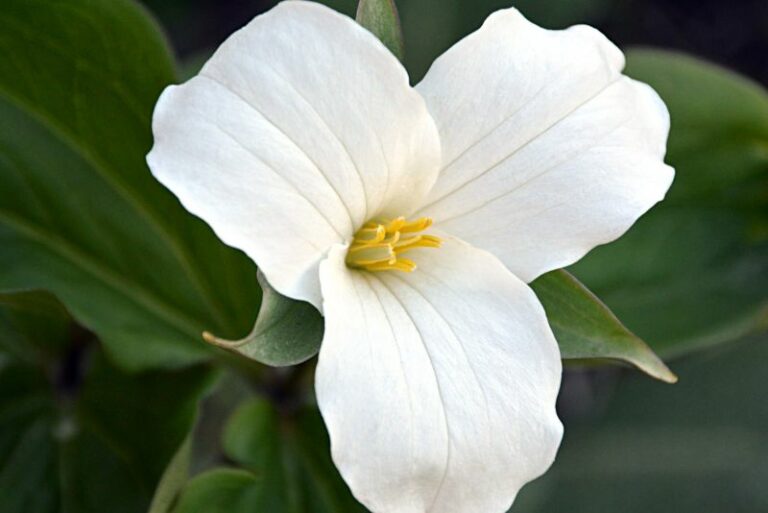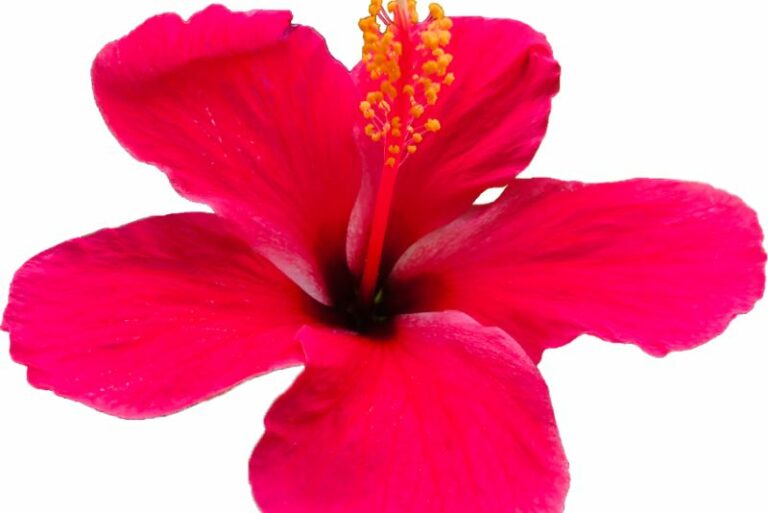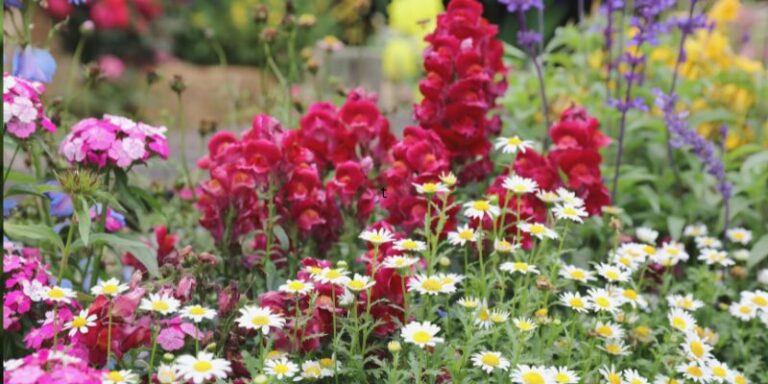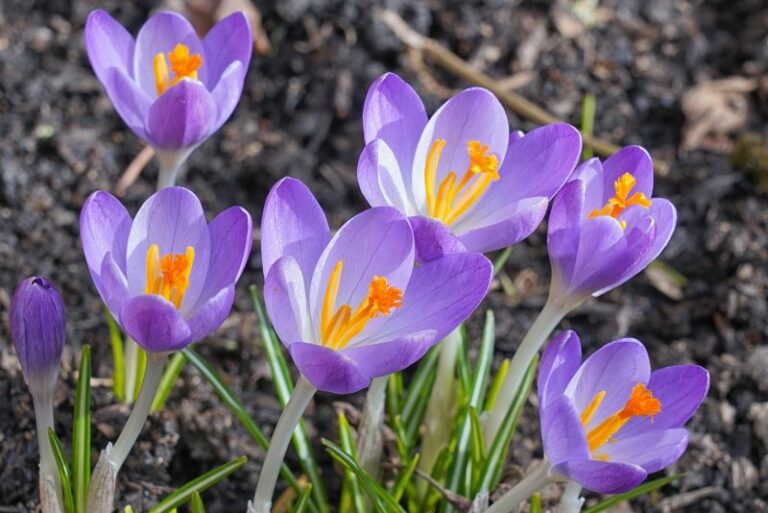Bleeding Heart Flower Care: Growing Dicentra Spectabilis
Immerse yourself in the world of Dicentra Spectabilis, better known as the enchanting Bleeding Heart flower. This floral gem, with its heart-shaped blossoms and graceful arching stems, is a sight to behold in any garden. A symbol of enduring love and passion, Bleeding Heart is not just captivating to the eye but also remarkably manageable to grow.
This guide will walk you through the simple steps to nurture your own Bleeding Heart plant, providing all the needed care to ensure it thrives and graces your garden with its breathtaking beauty.
Bleeding Heart Flower Overview
| Feature | Description |
|---|---|
| Common Name(s) | Bleeding Heart, Dutchman’s Breeches, Lyre Flower, Lady-in-a-Bath |
| Scientific Name | Lamprocapnos spectabilis (formerly known as Dicentra spectabilis) |
| Family | Papaveraceae |
| Height | 1.5 to 2.5 feet |
| Light | Partial shade to full shade |
| Water | Regular watering, do not let soil dry out |
| Soil | Well-drained, rich, organic soil |
| Fertilizer | Balanced liquid fertilizer in spring |
| Pests and Diseases | Aphids, slugs, snails; leaf spot, root rot |
Please note that the requirements may vary slightly depending on the specific variety of Bleeding Heart. Always check with a local nursery or extension service for the most accurate care instructions for your area.
All About Bleeding Heart Flower

The Bleeding Heart flower, scientifically named Dicentra Spectabilis, is a perennial plant native to East Asia, particularly in regions of Siberia, northern China, Korea, and Japan. It belongs to the Poppy family, Papaveraceae. This striking plant can grow up to 2-3 feet in height and a similar width, making it a standout in any garden.
Its fascinating heart-shaped flowers, in variations of pink and white, hang gracefully off long, arching stems, and typically bloom in late spring to early summer. The unique appearance of its blossoms—resembling a heart with a drop of blood dripping from it—lends the plant its evocative name.
When it comes to their environmental preferences, Bleeding Hearts are woodland plants that thrive in cool, moist, and shady conditions. They prefer well-drained soil enriched with organic matter and appreciate a bit of morning sunlight. However, they need protection from the harsh afternoon rays, which can scorch their delicate foliage.
The foliage of the Bleeding Heart plant is just as impressive as its flowers. It boasts grey-green leaves that are finely divided, giving them a fern-like appearance. After the plant has finished blooming, the foliage makes an attractive green backdrop for other plants in the garden.
Bleeding Heart is not only attractive but also deer and rabbit-resistant, which makes it a popular choice among gardeners dealing with these pests. It’s also known to attract beneficial insects like bees and butterflies, promoting pollination in your garden.
Despite its delicate and exotic appearance, Bleeding Heart is surprisingly easy to grow and care for, making it a favorite among both novice and experienced gardeners. It’s an outstanding plant that can add an element of romantic charm and spectacular color to your garden.
Varieties of Bleeding Heart Flower
There are several varieties of Bleeding Heart flowers, each with its own distinct characteristics. Let’s delve into the details of some of the most popular ones.
1. Old-Fashioned Bleeding Heart (Dicentra spectabilis)
The Old-Fashioned Bleeding Heart is the most familiar variety, recognized for its iconic heart-shaped pink and white flowers. Native to Asia, this variety has been cultivated in gardens for centuries. It grows up to 2-3 feet high, with elegant, arching stems adorned with a row of hearts. The flowers do not emit a strong scent, but their striking appearance more than compensates for it. Their resemblance to the common Bleeding Heart is noticeable, but they exhibit more height and spreading growth.
2. Fringed Bleeding Heart (Dicentra eximia)
The Fringed Bleeding Heart is a native of the Eastern United States. It boasts smaller, more delicate flowers than its Asian counterpart, but compensates with a more extended bloom period, from spring to early fall. Its flowers are pink, arranged on arching stems, and its foliage is finely-divided with a feathery, fern-like appearance. The plant has a mild, pleasant scent and grows to a height of about 1-1.5 feet.
3. Western Bleeding Heart (Dicentra formosa)
Native to the Pacific Northwest, the Western Bleeding Heart displays a cluster of pink to purple heart-shaped flowers atop 1-foot tall stems. Its leaves are deeply divided and bluish-green. Unlike some other varieties, the Western Bleeding Heart can tolerate slightly drier soil conditions. The scent is mild, similar to other Bleeding Heart varieties.
4. Dutchman’s Breeches (Dicentra cucullaria)
While not technically a Bleeding Heart, the Dutchman’s Breeches is a close relative. It’s named for its unique white flowers that resemble pants hung out to dry. Its flowers are smaller and whiter than the common Bleeding Heart. This plant adorns woodland gardens in early spring before going dormant in the summer. It lacks a noticeable scent but makes up for it with its distinct and whimsical appearance.
5. Fern-Leaf Bleeding Heart (Dicentra ‘Luxuriant’)
This variety is a hybrid, featuring cherry-red flowers and fine, grey-green, fern-like foliage. The Fern-Leaf Bleeding Heart is a compact plant, growing only up to 1 foot in height. However, its smaller size doesn’t detract from its beauty. With flowers blooming from late spring to early fall and a light, pleasant scent, it’s a delightful addition to any garden.
Each of these varieties shares the captivating heart-shaped flower form and the love for cooler, shaded spots in the garden. Regardless of the variety you choose, Bleeding Heart flowers are sure to add a touch of whimsy and romance to your garden.
Bleeding Heart Flower Care Procedures

As mentioned earlier, Bleeding Heart flowers are relatively undemanding and easy to care for. However, there are a few essential steps you should follow to ensure the best growth and blooms.
Light and Temperature
Bleeding Heart flowers have a preference for partial to full shade, particularly in regions with hot summers. A spot under a deciduous tree can be ideal as it provides morning sunlight and afternoon shade, which is the perfect light balance for this plant. However, in cooler, northern climates, they can tolerate more sun, but still appreciate some afternoon shade.
When it comes to temperature, Bleeding Hearts prefer cooler conditions. They thrive in USDA hardiness zones 3-9. The plants will typically emerge in early spring when temperatures are still relatively cool. During the heat of the summer, especially in the southern part of their hardiness range, the plants may go dormant and die back, only to return again the next spring. So, don’t panic if your plant disappears during the hot months; it’s simply taking a rest.
In terms of indoor care, Bleeding Hearts need a cool, humid environment to mimic their natural habitat. If you’re growing them inside, keep the room temperature between 50-65 degrees Fahrenheit during the growing season. Remember, they also need good air circulation to prevent fungal diseases, so don’t crowd them with other plants.
In conclusion, for optimal growth and blooming, ensure your Bleeding Heart plant gets enough sunlight in the morning and sufficient shade in the afternoon, especially during hot spells. Remember, though resilient, they thrive better in cooler, shaded conditions.
Water and Humidity
Bleeding Heart flowers require moist, but well-drained soil. They don’t tolerate water-logged conditions, as this can lead to root rot and other fungal diseases. Regular watering, especially during dry spells, is crucial to keep the plant healthy, but ensure that the water doesn’t pool around the plant’s base. A good practice is to water deeply once or twice a week rather than frequent, shallow watering. This encourages the roots to grow deeper into the soil, making the plant more drought-resistant.
The soil should be allowed to dry out slightly between waterings, but it should never completely dry out. If the leaves begin to yellow or wilt, this is often a sign that the plant is either getting too much or too little water.
As for humidity, Bleeding Hearts prefer a relatively high humidity level. This can be achieved by placing your potted plant on a tray filled with pebbles and a little water. However, ensure that the pot is not sitting in the water as this can lead to waterlogged soil. Outdoor plants usually receive adequate humidity from the environment, but during particularly dry periods, you might need to mist the leaves lightly in the morning hours. Avoid wetting the foliage in the evening, as this can lead to fungal issues.
Remember, while Bleeding Hearts are relatively easy-going plants, they still require attentive care, especially when it comes to watering and humidity. Finding the right balance for your specific environment might take a bit of time and observation, but once you do, your Bleeding Heart will reward you with its beautiful and unique blooms.
Soil and pH Requirements for Bleeding Heart Flowers
The soil requirements for Bleeding Heart flowers are pivotal to their healthy growth and lush blooms. The soil not only supports the plant physically but also provides water, nutrients, and air to the roots.
Soil Type
Bleeding Heart flowers thrive best in organic-rich, loamy soil. Loam is a balanced mixture of sand, silt, and clay, supplemented with organic matter. This type of soil offers an ideal environment for Bleeding Hearts because of its excellent drainage, structure, and capacity to retain adequate moisture and nutrients.
Soil pH
Bleeding Heart flowers prefer slightly acidic to neutral pH levels, typically between 6.0 and 7.0. You can determine your soil’s pH level using a home testing kit before planting. If your soil is too alkaline, you can amend it with elemental sulfur or aluminum sulfate to lower the pH. If it’s too acidic, adding lime or wood ash can raise the pH.
Preparing the soil
When preparing your garden bed for Bleeding Heart flowers, start by removing any weeds or grass in the area. Turn the soil with a garden fork or a tiller to a depth of about 12 inches, loosening any compacted areas and making it easier for the roots to grow. If your soil is heavy clay or sandy, improve its texture and fertility by mixing in some organic matter like well-rotted compost or aged manure. This not only improves the soil structure but also adds essential nutrients, helping your Bleeding Hearts flourish.
Once the soil is prepared, dig a hole twice as wide and just as deep as the root ball of your Bleeding Heart plant. Set the plant in the hole so that the top of the root ball is level with the soil surface, backfill with the amended soil, firm it gently around the base of the plant, and water thoroughly.
Lastly, remember that the best soil for your Bleeding Heart flowers is one that is well-tended and well-loved. A little effort in preparing the soil can go a long way in ensuring the health and longevity of your plants.
Fertilizer Requirements for Bleeding Heart Flowers
Bleeding Heart plants are heavy feeders and thrive best with regular fertilization. Fertilizers provide essential nutrients that promote the plant’s healthy growth and encourage a profusion of blooms. However, it’s important to use them correctly to avoid damaging the plant.
Type of Fertilizer
A well-balanced, slow-release granular or water-soluble fertilizer is ideal for Bleeding Hearts. Look for a formula that is balanced, such as 10-10-10 or 14-14-14, which refers to the proportions of nitrogen (N), phosphorus (P), and potassium (K), respectively. Nitrogen promotes leaf growth, phosphorus is for root and flower development, and potassium helps overall plant health.
When to Fertilize
The best time to fertilize Bleeding Hearts is in early spring, just as new growth begins to appear. This gives the plants a nutritional boost as they start their growing season. Additional applications can be made every 4-6 weeks during the growing season, typically ending in early summer when the plants begin to go dormant.
How to Apply Fertilizer
Before applying a granular fertilizer, make sure the soil around the plant is damp. Sprinkle the granules evenly around the base of the plant, keeping them around 3-4 inches away from the stem to avoid burning the roots. After application, water the area thoroughly to dissolve the fertilizer and help it reach the roots.
For a water-soluble fertilizer, mix the solution as directed on the package, then water the plant with the solution. Apply it to both the leaves and the soil to maximize absorption.
Remember not to over-fertilize. Too much fertilizer can lead to salt buildup in the soil, which can be harmful to the plants. If the foliage starts to yellow or the edges look burnt, these may be signs of over-fertilization.
Monitoring and Adjusting Fertilizer Use
It’s always important to monitor your plants and adjust your fertilizer use as needed. Factors such as soil type, weather, and the specific needs of your Bleeding Hearts can all affect how much fertilizer is necessary. If your plants are growing well and producing lots of healthy blooms, you’re probably using the right amount. If growth seems stunted or the leaves are pale or yellowing, you may need to adjust your fertilization routine.
In conclusion, with the right type, timing, and application method of fertilizer, your Bleeding Heart flowers will continue to grow and bloom spectacularly throughout their growing season. Just remember, a little care goes a long way with these beautiful plants.
Care Procedures for Repotting Bleeding Heart Flowers
Repotting is a crucial aspect of Bleeding Heart flower care that ensures the plant’s roots have adequate space to grow and flourish. If you notice signs like slowed growth, yellowing leaves, or roots protruding from the drainage holes, it might be time to repot your Bleeding Heart plant. Following is a step-by-step guide to help you carry out this procedure effectively.
Step 1: Choose the Right Pot
When choosing a new pot for your Bleeding Heart, make sure it’s one size larger than the current one. It should have good drainage to prevent waterlogging, which can lead to root rot.
Step 2: Prepare the Pot
Before repotting, clean the new pot thoroughly to remove any dust or residues that might harm the plant. Then, cover the drainage holes with small stones or pieces of broken pottery to ensure proper drainage while keeping the soil in place.
Step 3: Remove the Plant from its Current Pot
Water the plant a day before repotting. This will make the roots more flexible and easier to remove from the pot. To remove the plant, gently hold it by the base and tip the pot upside down, sliding the plant out. If the plant doesn’t come out easily, you might need to tap the pot’s rim gently.
Step 4: Check the Roots
Inspect the roots for any signs of disease or damage. Healthy roots should be firm and white or light brown. If you notice any dark, soft or foul-smelling roots, trim them off with a clean, sharp pair of scissors.
Step 5: Place the Plant in the New Pot
Place some fresh potting mix in the bottom of the new pot. Position the Bleeding Heart in the pot so that the top of the root ball is about an inch below the pot’s rim. This will leave enough room for watering.
Step 6: Backfill the Pot
Fill the pot with the potting mix, pressing it down gently around the plant’s base. Leave a slight depression around the stem to hold water.
Step 7: Water Thoroughly
Water the freshly potted plant thoroughly to settle the soil. Continue to water as per the plant’s regular watering schedule.
Step 8: Monitor the Plant
After repotting, keep an eye on your Bleeding Heart plant. It may take a few weeks to establish itself in the new pot and recover from any stress caused by the repotting process.
Remember, repotting should be done with care, as rough handling can damage the plant. With proper procedure and care, your Bleeding Heart plant will adapt to its new home and continue to grow and bloom beautifully.
Propagation Methods for Bleeding Heart Flowers
Propagating Bleeding Heart flowers can be achieved through several methods, including division, cuttings, or growing from seeds, each offering its own advantages.
Propagation by Division
Division is a quick and easy way to propagate your Bleeding Hearts. This method also gives you fully-grown plants much faster than starting from seed. Here’s how to do it:
- Choose the right time: The best time to divide Bleeding Hearts is in the early spring before the plant has put out a lot of new growth, or in the fall after it has gone dormant.
- Dig up the plant: Carefully dig around the plant and lift it from the ground, trying not to damage the roots.
- Separate the clumps: Gently separate the plant into smaller clumps. Each clump should have at least one eye, or growth point.
- Replant the divisions: Plant each division at the same depth it was previously growing. Water thoroughly after planting.
Propagation by Cuttings
Growing Bleeding Hearts from cuttings is another viable propagation method.
- Take a cutting: In late spring or early summer, cut a 4-6 inch piece from the tip of a Bleeding Heart stem. Make sure the cutting includes at least three leaf nodes.
- Prepare the cutting: Remove the lower leaves, leaving only a couple of leaves at the top of the cutting. Dip the cut end into the rooting hormone to encourage root formation.
- Plant the cutting: Place the cutting in a container with a well-draining potting mix. Keep the cutting humid by covering it with a plastic bag and placing it in a warm, bright location out of direct sunlight.
- Transplant the rooted cutting: Once the cutting has developed roots, it can be transplanted into a larger pot or directly into the garden.
Propagation by Seeds
Lastly, you can propagate Bleeding Hearts from seeds, though this method requires patience as it can take up to a year for the plants to bloom.
- Sow the seeds: Immediately after collecting seeds from a mature Bleeding Heart plant, sow them in a seed tray filled with a mix of compost and perlite.
- Provide the right conditions: Place the seed tray in a location that remains between 60-65 degrees Fahrenheit (15-18 degrees Celsius).
- Transplant the seedlings: Once the seedlings are large enough to handle, they can be transplanted into individual pots.
Remember, whichever method you choose, patience and proper care are key to successfully propagating your Bleeding Heart flowers.
Bleeding Heart Flower Care: Pruning Procedures
Pruning is a critical aspect of maintaining your Bleeding Heart’s health and promoting its growth. Here is a detailed guide on how to prune your Bleeding Heart plant effectively:
Step 1: Choose the Right Time
The optimal time to prune your Bleeding Heart is in late summer or early fall, once it has finished blooming and the foliage begins to turn yellow.
Step 2: Prepare Your Equipment
Ensure you have a sharp, clean pair of pruning shears or scissors. Disinfecting your tools before use can help prevent the spread of disease.
Step 3: Identify What Needs to be Pruned
Look for areas of the plant that are dead, damaged, or diseased. These will often appear brown, wilted, or with a powdery mildew.
Step 4: Make Clean Cuts
Starting at the base of the plant, make clean cuts at a 45-degree angle. This angle allows water to run off the cut area, reducing the chances of water-borne diseases.
Step 5: Remove Dead or Diseased Foliage
Remove any dead or diseased sections of the plant, ensuring you do not leave any part of the damaged stem. This will help prevent disease from spreading to healthy parts of the plant.
Step 6: Thin Out the Plant
If your Bleeding Heart plant is looking a little crowded, consider thinning it out. This involves removing some of the stems entirely to increase air circulation, which can reduce the incidence of disease.
Step 7: Clean Up
After pruning, clean up any debris left around the plant. This not only keeps your garden tidy but also prevents any diseases present in the debris from infecting the plant.
Step 8: Monitor the Plant
After pruning, keep an eye on your plant. If any signs of disease reappear, you may need to prune again or consider other treatments.
Remember, pruning should be done with care and precision. This process will help your Bleeding Heart plant stay healthy and vibrant, promoting new growth and abundant flowering in the next season.
Troubleshooting Bleeding Heart Flower
Despite our best efforts, sometimes plants can have issues. Bleeding Heart Flowers are generally robust, but they can also experience growing problems, pests, and diseases. Here’s a guide to help diagnose and treat common issues.
Introduction to Troubleshooting
Understanding the specific needs of your Bleeding Heart flower is crucial for its health and vibrancy. Observing any changes in its growth, leaf color, or flowering pattern can provide early signs of potential problems.
Growing Problems
One of the most common growing problems is the yellowing or wilting of leaves, often caused by overwatering or poor soil drainage. Ensure that your plant is in well-drained soil and adjust your watering schedule as needed. Additionally, if the plant is not flowering as expected, it may be due to insufficient light or nutrient deficiency. Consider relocating the plant to a brighter spot or supplementing with a balanced plant fertilizer.
Pests
Bleeding Heart flowers can sometimes be affected by pests such as aphids, slugs, and snails. Aphids can be identified by their small, pear-shaped bodies and they can cause the leaves to curl and turn yellow. A strong water spray can dislodge aphids or a mild insecticidal soap can be used. Slugs and snails, on the other hand, are nighttime feeders that leave behind a slimy trail and chewed leaves. These pests can be controlled by handpicking or using a slug bait.
Diseases
Fungal diseases are common in Bleeding Heart plants and often manifest as powdery mildew or leaf spots. Improving air circulation, reducing overhead watering, and applying a suitable fungicide can help manage these diseases.
Remember, regular monitoring and early intervention are key to maintaining the health of your Bleeding Heart flower. Don’t be disheartened by these challenges, they are all part of the rewarding journey of gardening!
Frequently Asked Questions About Bleeding Heart Flower
1. How often should I water my Bleeding Heart plant?
Bleeding Hearts prefer evenly moist soil, but it’s crucial to avoid overwatering which can cause root rot. Watering once a week should be sufficient, but this can vary based on climate and soil conditions. Always check the soil’s moisture level before watering.
2. Do Bleeding Hearts need a lot of sunlight?
While Bleeding Hearts appreciate bright, indirect light, they do not fare well in direct sunlight, especially in hotter climates. They prefer partial shade to full shade environments.
3. When will my Bleeding Heart flower bloom?
Bleeding Hearts generally bloom in late spring and continue through the early part of summer. This can vary slightly based on climate and the specific care the plant receives.
4. Can Bleeding Heart survive the winter?
Yes, Bleeding Hearts are perennials, which means they can survive the winter. However, their foliage will die back with the first frost, and the plant will remain dormant during the colder months, re-emerging in the spring.
5. Why are the leaves on my Bleeding Heart turning yellow?
Yellowing leaves can be a sign of overwatering or poor drainage. Alternatively, it could indicate a nutrient deficiency. Check your watering schedule and the quality of your soil to identify the problem.
Remember, every plant is unique and might require slightly different care. Always observe your Bleeding Heart flower’s condition and adjust your care routine based on its specific needs.






